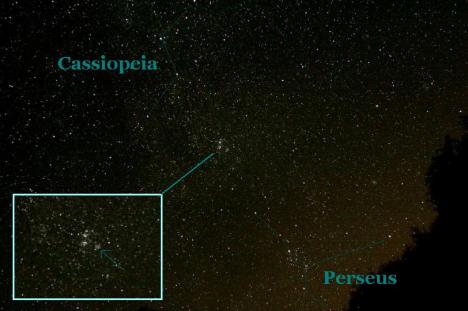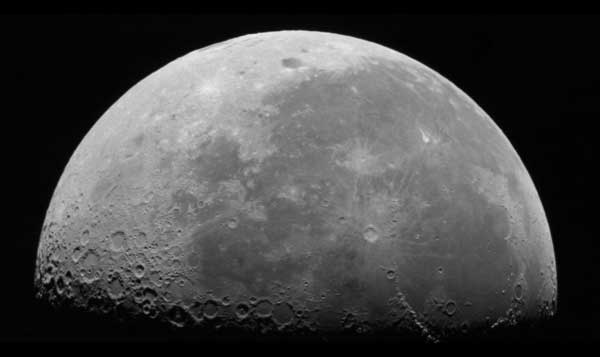
Everyone in North and Central America -- weather permitting -- will have ringside seats for a total eclipse of the Moon high in the sky late Monday night, December 20th, and/or early Tuesday morning the 21st.
Earth's shadow will totally engulf the Moon, turning it spooky orange-red, from 2:41 to 3:53 a.m. Eastern Standard Time, or 11:41 p.m. to 12:53 a.m. Pacific Standard Time (see full timetable below). The eclipse will be partial for a little more than an hour before and after.
Unlike a solar eclipse, a lunar eclipse is visible to everyone on the entire Moon-facing side of Earth at once. "We're all looking at this together," says Sky & Telescope
editor in chief Robert Naeye.
Skywatchers in Europe, West Africa, and South America get to see only part of the eclipse before it's interrupted by moonset and sunrise on the morning of the 21st. In East Asia, Australia, and New Zealand, the eclipse is already in progress at sunset and moonrise on 21st local date.
Program for the Show
A total lunar eclipse has five stages. It begins when the Moon first enters the *penumbra,* or pale outer fringe, of Earth's shadow. But that event can't be seen; the shading in the outer part of the penumbra is extremely slight. Only when the Moon's leading edge is about halfway across the penumbra does the first slight dimming become detectable to the eye.
The second stage, *partial eclipse,* starts when the Moon's edge reaches the *umbra,* or Earth's inner shadow. "It's eerie watching this weird, red-brown shadow creeping across the bright Moon," says Sky & Telescope senior editor Alan MacRobert. "Look carefully, and you'll notice that Earth's shadow has a curved edge. This was the first visible proof to the ancients -- at least the ones who knew what they were seeing, like the Greeks -- that the Earth is round."
As more of the Moon slides into the umbra, look around the sky. A second, deeper night is falling -- "night within night," says MacRobert. If you're far from city lights, hundreds of additional stars start appearing in what just a little earlier was a bright, moonlight-washed sky. An hour or so into partial eclipse, only a final bright sliver of the Moon remains outside the umbra -- and the rest of it shows an eerie reddish glow.
The third stage, *total eclipse,* begins when the last bit of the Moon slips into the umbra. For this eclipse, totality lasts a generous 72 minutes, with the Moon looking, says MacRobert, "like a luminous rotten orange."
Then, as the Moon continues moving eastward along its orbit, events unwind in reverse order. Totality ends when the Moon's leading edge reemerges into sunlight, returning once again to a partial eclipse (stage four). Then, after all of the Moon escapes the umbra, the dusky penumbral shading (stage five) gradually fades away, leaving the full Moon shining as brightly as if nothing had happened.

Red in the Darkness
The umbra is the part of Earth's shadow where the Sun is blocked from the Moon completely. So why does the Moon here glow deep orange or red, rather than being totally blacked out?
"That red light you see on the Moon during a lunar eclipse comes from all the sunrises and sunsets around the Earth at the time," says Naeye. Our atmosphere scatters and refracts (bends) the sunlight that grazes the rim of our globe, sending it into Earth's shadow. "If you were an astronaut on the Moon," he says, "you'd see the Sun covered up by a dark Earth that was ringed all around with a thin, bright band of sunset- and sunrise-colored light."
On rare occasions the eclipsed Moon does go black. Other times it appears as bright and coppery orange as a fresh penny. And sometimes it turns brown like chocolate, or as dark red-black as dried blood. Two factors affect an eclipse's color and brightness. The first is simply how deeply the Moon goes into the umbra. The center of the umbra is much darker than its edges. This time the Moon will pass fairly deep through the umbra, and at mid-eclipse the Moon's southern edge almost reaches the umbra's center. The other factor is the state of Earth's atmosphere along the sunrise-sunset line. If the air is very clear, the eclipse is bright. But if a major volcanic eruption has polluted the stratosphere with thin haze, the eclipse will be dark red, ashen gray-brown, or red-black.
In addition, a little blue light refracted by Earth's clear, ozone-rich upper atmosphere can also add to the mix, especially near the umbra's edge, creating a subtle combination of changing colors. Such variable shading can give the eclipsed Moon a very three-dimensional appearance.
Next Eclipses
This is the first total eclipse of the Moon in almost three years (since the night of Feb. 20-21, 2008).
The next eclipse of the Moon is a deep total one on June 15, 2011, but North America misses out; our side of the world will be facing the wrong way.
Skywatchers on the West Coast can catch part of the following lunar eclipse, on the morning of December 10, 2011, until it's interrupted by moonset and sunrise.
The next total lunar eclipse for the whole continent doesn't come until April 14-15, 2014 -- an unusually long wait. So hope for good weather this time!







































